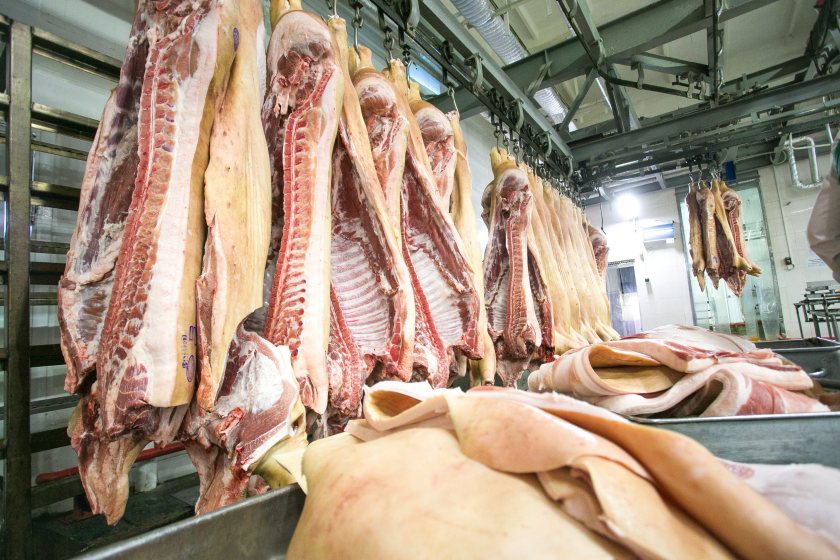
The use of high-concentration CO2 gas to stun pigs before slaughter should be phased out within five years, according to a landmark report by the government’s independent Animal Welfare Committee (AWC).
The advisory body — which provides guidance to Defra and the devolved administrations — warns that exposing pigs to CO2 causes significant welfare issues, including pain, respiratory distress and fear.
The report describes how these effects are “observed before loss of posture and hence occur in the conscious phase of the stunning process.”
Currently, around 90% of pigs reared in England and Wales are stunned with CO2 in paternoster gas chambers used in abattoirs, according to the Food Standards Agency’s 2024 Slaughter Sector Survey. The remaining 10% are stunned by electrical or percussive methods.
The AWC findings build on previous warnings from the Farm Animal Welfare Council in 2003 and the European Food Safety Authority in 2004 and 2020, which also urged the phasing out of CO2 stunning on welfare grounds.
A number of other European countries, including Germany and the Netherlands, are already exploring alternatives to CO2, with pilot projects under way to test inert gases and electrical systems.
The committee assessed possible alternatives, including the use of inert gases such as argon or nitrogen, electrical stunning and captive bolt devices.
It noted that immersion in argon “causes minimal immediate visible reaction, since these gases cannot be sensed directly by the pig” — but unconsciousness is induced only gradually, and all lethal gas mixtures involve “some degree of welfare compromise.”
The report also ruled out any benefit from mixing CO2 with inert gases, and considered wider issues such as meat quality, costs, and the ethics of various stunning methods.
The AWC has recommended that the use of CO2, including in combination with inert gases, should be prohibited in order to prevent pigs experiencing avoidable pain, distress or suffering at slaughter.
It advised that any transition period for industry should be as short as possible and in any case within five years, with businesses urged to implement change more quickly where feasible.
The committee also recommended that slaughter lines be limited to a specified number of animals per hour so that each pig can move through the system without the need for physical coercion.
In addition, it suggested that legislation be amended to require pigs to be kept in small social groups, ideally with animals from their rearing group, during lairage and slaughter.
Finally, it encouraged government and industry to support research into new technologies, such as automated video monitoring systems, to assess animal welfare and detect harms in handling, stunning and slaughter processes.
National Pig Association (NPA) chief executive Lizzie Wilson acknowledged the concerns raised: “The NPA acknowledges concerns that the slaughter of pigs could and should be more humane, and we are part of a UK pig sector group which is committed to exploring alternatives and finding a solution that can deliver on animal welfare at the time of stunning and slaughter.”
She stressed that any new approach must also be practical and affordable: “Any new approach must be commercially viable, to ensure uptake, to ensure quality of meat, and to prevent any unintended consequences for welfare – for example, throughput capacity must be sufficient to ensure that pigs are not held on farm or in lairage for longer than necessary.”
Wilson added that while the report provided a comprehensive review, “unfortunately there is still no conclusive ‘best’ alternative due to issues with throughput capacity, meat quality and cost. The UK pig industry must now work together to decide how we go forward.”
The government is expected to consider the AWC’s recommendations in the coming months, with Defra likely to consult industry on potential alternatives.
